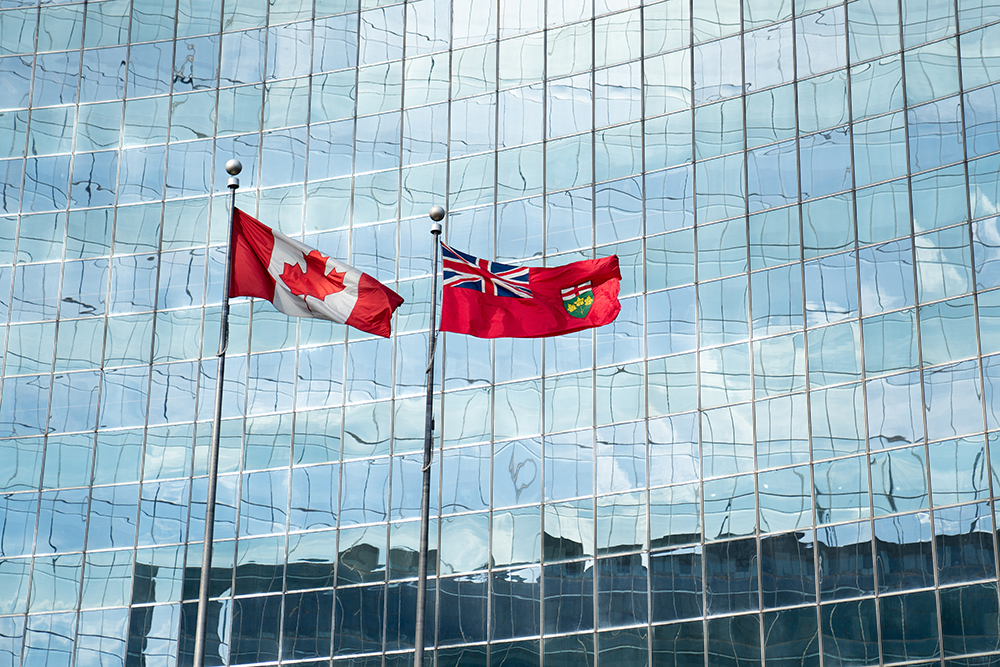
Director and officer liability from COVID-19 workplace exposure
June 24, 2020
By
Norm Keith
Legal exposure may be limited, but still important to address

Physical distancing is a new norm in businesses as a result of COVID-19. (OHS Canada)
On March 11, COVID-19 was declared a pandemic by the World Health Organization.
The COVID-19 pandemic has been highly disruptive of socio-economic activity in Canada and around the world.
This has given rise to governance and leadership challenges, and decisions regarding the state of the workplace, as well as exposure to workers, clients, customers and patients in many businesses across Canada.
A central concern for many boards and CEOs has been the risk of potential legal liability for their organizations, individuals and themselves.
The following commentary drills down into the legal exposure of directors and officers (D&Os) to personal legal liability arising from an employee or worker, customer, client or patient (third parties) from becoming infected by COVID-19 arising out of — or in the course of — employment and in connection with the business or the workplace.
Civil liability
A civil claim for negligence must establish a duty, breach of duty and damages. There is a general legal duty of care on organizations and their D&Os to provide a safe workplace for workers and third parties.
To succeed in a civil action there must be clear, convincing and compelling evidence — on a balance of probabilities — to support the claim for damages against D&Os for a worker or a third party to allege that they have been infected and suffered harm and loss from a COVID-19 exposure arising out of, or at the business location, for which the D&Os have a duty of care.
In Ontario, the Workplace Safety and Insurance Act provides for a no-fault system of compensation for workers and their dependents for an accident, injury or illness arising out of and in the course of employment.
This applies to an exposure to COVID-19 that gives rise to an occupational illness or death. Where workers’ compensation legislation applies, there is no right to sue an employer or D&Os arising out of a worker contracting COVID-19 in the workplace.
The other legal risk for D&O exposure to COVID-19 civil liability lies with workers and workplaces not covered by workers’ compensation legislation and non-worker third parties.
When a customer, client or patient is infected by the COVID-19 virus as a result of exposure to the business or workplace, it may be argued that D&Os breached their duty of care towards such workers and third parties by failing to follow public or occupational health and safety legislation, regulations or standards related to COVID-19 risk management.
Regulatory liability
Occupational health and safety (OH&S) statutes in Canada generally do not identify D&Os as having specific personal legal responsibilities under those statutes.
The one exception is Ontario, where Section 32 of the Occupational Health and Safety Act (OHSA) states:
Every director and every officer of a corporation shall take all reasonable care to ensure that the corporation complies with
(a) this Act and the regulations
(b) orders and requirements of inspectors and Directors, and
(c) orders of the Minister.
This legal duty on D&Os under Ontario OH&S law may also be incorporated by reference in other provincial workplace laws since D&Os often are included in the definition of a representative of the employer.
On balance, we recommend that organizations and all D&Os consider themselves bound by similar duties to those expressed in the Ontario statute above, for the purpose of managing this category of regulatory legal risk.
Insurance is generally available only for D&Os legal defence costs in a quasi-criminal, strict liability regulatory offence such as that under the OHSA.
However, if there was a conviction of a D&O charged with such an offence — either by way of a guilty plea or after a trial, then the above-mentioned penalties are the associated risk with that type of proceeding.
There is a positive defence of due diligence, which will be referred to later, for all D&Os charged with OH&S law offences.

Directors and officers may be exposed to civil, regulatory and criminal liability depending on the facts of an exposure by a worker or a third party to a provable COVID infection in the workplace, writes Norm Keith. (Jazz/Adobe Stock)
Criminal liability
The Criminal Code was amended under the Westray Bill as a result of the Westray Mine disaster that occurred in Stellarton, in Pictou County, N.S. on May 9, 1992.
The heart of the Westray Bill — for the purpose of this article — is the establishment of a positive duty under Section 217.1 of the Criminal Code, which reads as follows:
“Everyone who undertakes, or has the authority, to direct how another person does work or performs a task is under a legal duty to take reasonable steps to prevent bodily harm to that person, or any other person, arising from that work or task.”
This positive duty placed on “everyone” includes D&Os of all organizations.
The Westray Bill has not been used to enforce this criminal OH&S negligence standard for any health-related issues. However, there are currently several long-term care homes in Quebec that are currently under police investigation.
An OH&S criminal negligence charge has a criminal intent element that requires proof of demonstrating wanton and reckless disregard by a D&O for the lives and safety of workers or third Parties in order to prove the criminal offence.
If a D&O is charged and convicted of the crime of OH&S criminal negligence established under the Westray Bill, the penalties include up to life imprisonment, and a fine up to $100,000 per count.
Jurisprudence with respect to the Westray Bill prosecutions has been sporadic, with individuals rather than corporations being the primary target of such criminal investigations and prosecution.
Recommendations
D&O legal exposure arising from COVID-19 may be limited but still an important issue for organizations to address.
D&Os may be exposed to civil, regulatory and criminal liability depending on the specific facts of an exposure by a worker or a third party to a provable COVID infection in the workplace or at the place of business.
However, some guidance at a general level is warranted and should be the beginning of such risk management consideration.
The following recommendations mitigate against the legal risk for D&Os arising from a potential COVID-19 exposure associated with the business or workplace:
- Exercising leadership of the exposure risk for workers and third parties of COVID-19 exposure in a proactive, positive and public manner.
- Following objective, public and occupational health and safety guidance on managing COVID-19 as a workplace hazard.
- Completing all recommended 12 steps of reopening the workplace after a COVID-19 shutdown.
- Revise and verify the D&O insurance coverage and related employment contract indemnity for D&Os and enhancing where appropriate.
- Ensuring continuous improvement approach to emergency management, business continuity, and pandemic planning now and in the future.
Norm Keith is a partner at Fasken in Toronto. He was assisted by David Marchione and Carla Oliver in the preparation of this commentary.